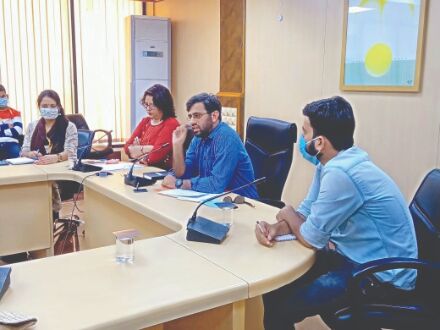Coordination for relief was messy early on, we stepped up where we could, says DCPCR

New Delhi: In the aftermath of the north-east Delhi riots last year, coordination between various government agencies was at a worrying low and various issues including shortage of relief materials, a potential health risk to civil volunteers and the limited workforce were affecting the relief work in the area, the Delhi Commission for the Protection of Child Right found as it engaged in rehabilitating victims of the riots.
The child rights body has come up with a 17-page report related to work done by them in the aftermath of the riots, where it outlines the initial hiccups in arranging relief work and how it stepped up to help in coordination among different government agencies.
"The local government machinery was available on the ground and many civil society organisations and volunteers were also assisting in the relief-related work, however, there was little coordination among stakeholders because of which relief work was taking more time," read the report.
As per the report, a meeting was convened in the office of SDM Karawal Nagar where the SDM was informed that his office had a limited workforce and was presently overburdened with work. "It was agreed that para volunteers from DLSA can be used for scrutinising the compensation forms and also to facilitate filling of these forms," the report read.
Significantly, Millennium Post had earlier reported that thousands of compensation claims were erroneously disbursed after the first round of verifications and are currently being re-assessed.
Shortage of relief material at some places was also highlighted during the meeting, therefore, it was agreed that Anganwadi Centres shall be used to distribute food and other items to the affected people, the report read.
Another issue that was highlighted by the civil volunteers working on the ground was a potential health risk due to piles of garbage, stones, debris, burnt vehicles, fire ash, still lying in the areas which were affected by the riots.
The DCPCR said it coordinated with the officials from the East Municipal Corporation and ensured that the roads were cleaned up, drains were unclogged, garbage was collected. A lack of basic facilities such as safe drinking water, clean toilets, were also observed and wherever it was felt that an intervention was required, the same was done on priority, the DCPCR said.
Another problem that hampered the relief work was that people were scared and did not want to return to their homes as they were worried about their safety and general peace within the locality. "Delhi Waqf Board, in such a situation, led various initiatives such as peace march within the small lanes of the affected region and people were made aware about brotherhood and how peace was the only way to live
with prosperity," the report concluded. Support was also sought from local elected representatives to visit the affected areas.
"The DCPCR came forward to facilitate the process of reinstating semblance of normalcy in the lives of these children and their families through various interventions," said Anurag Kundu, chairperson of DCPCR.



